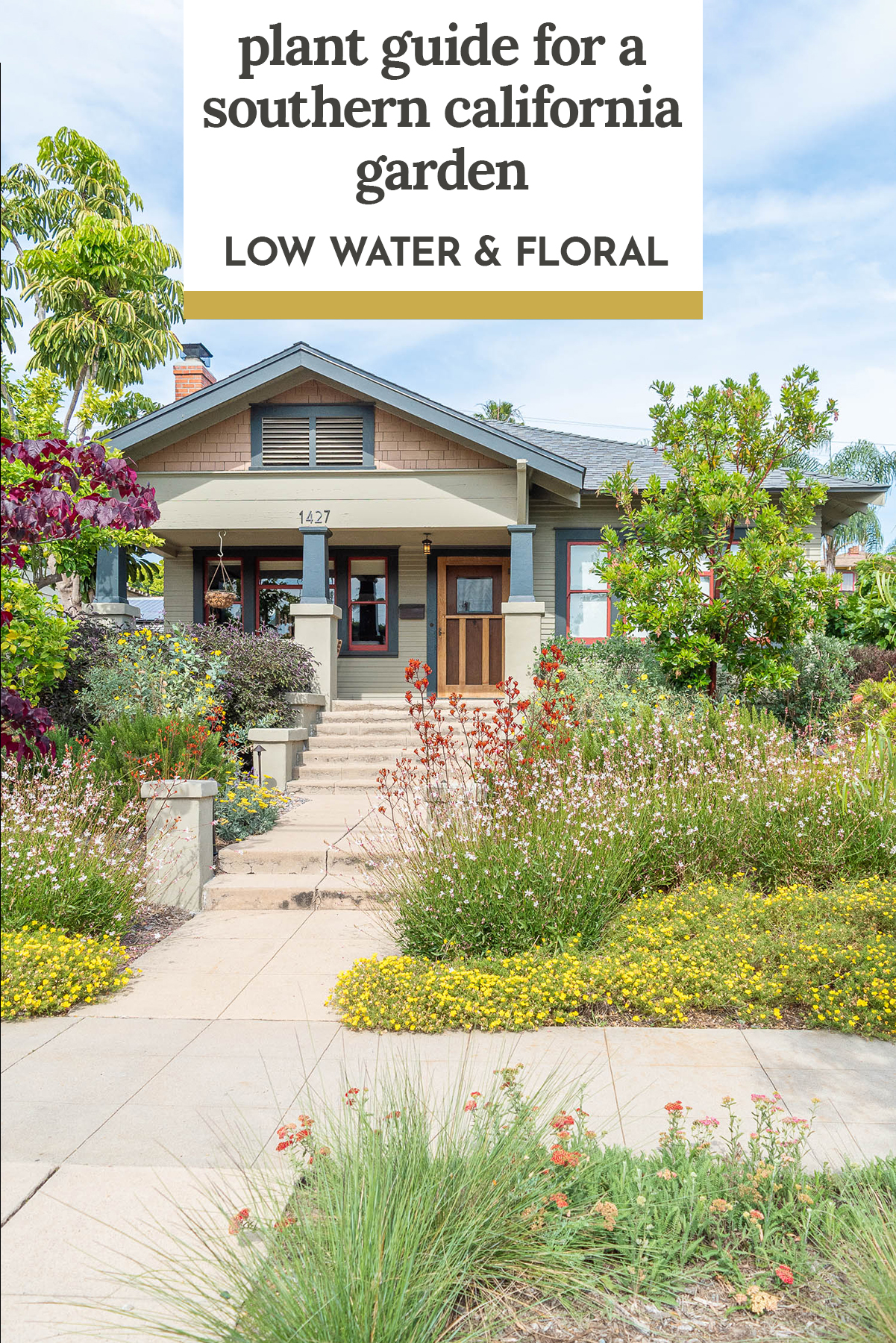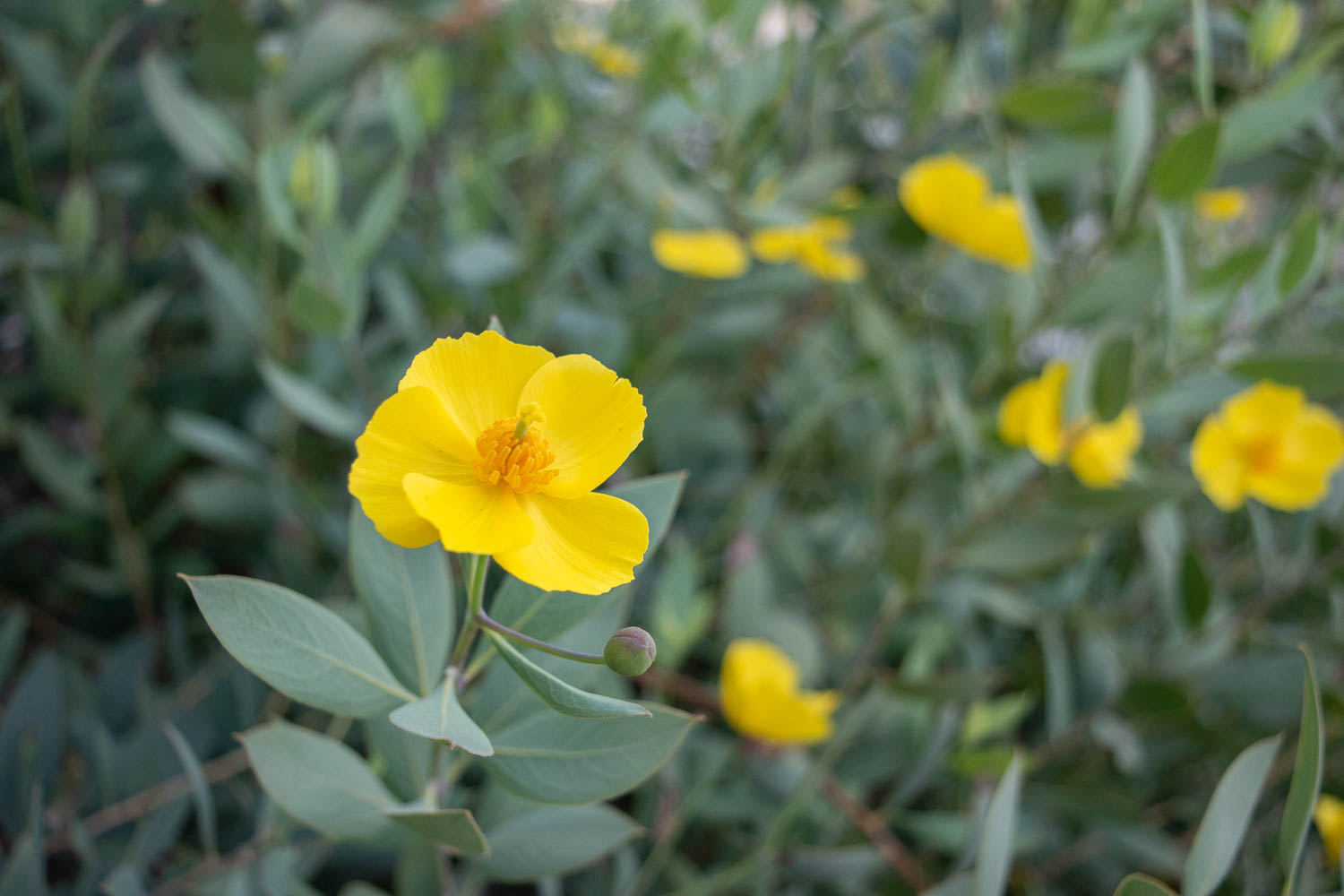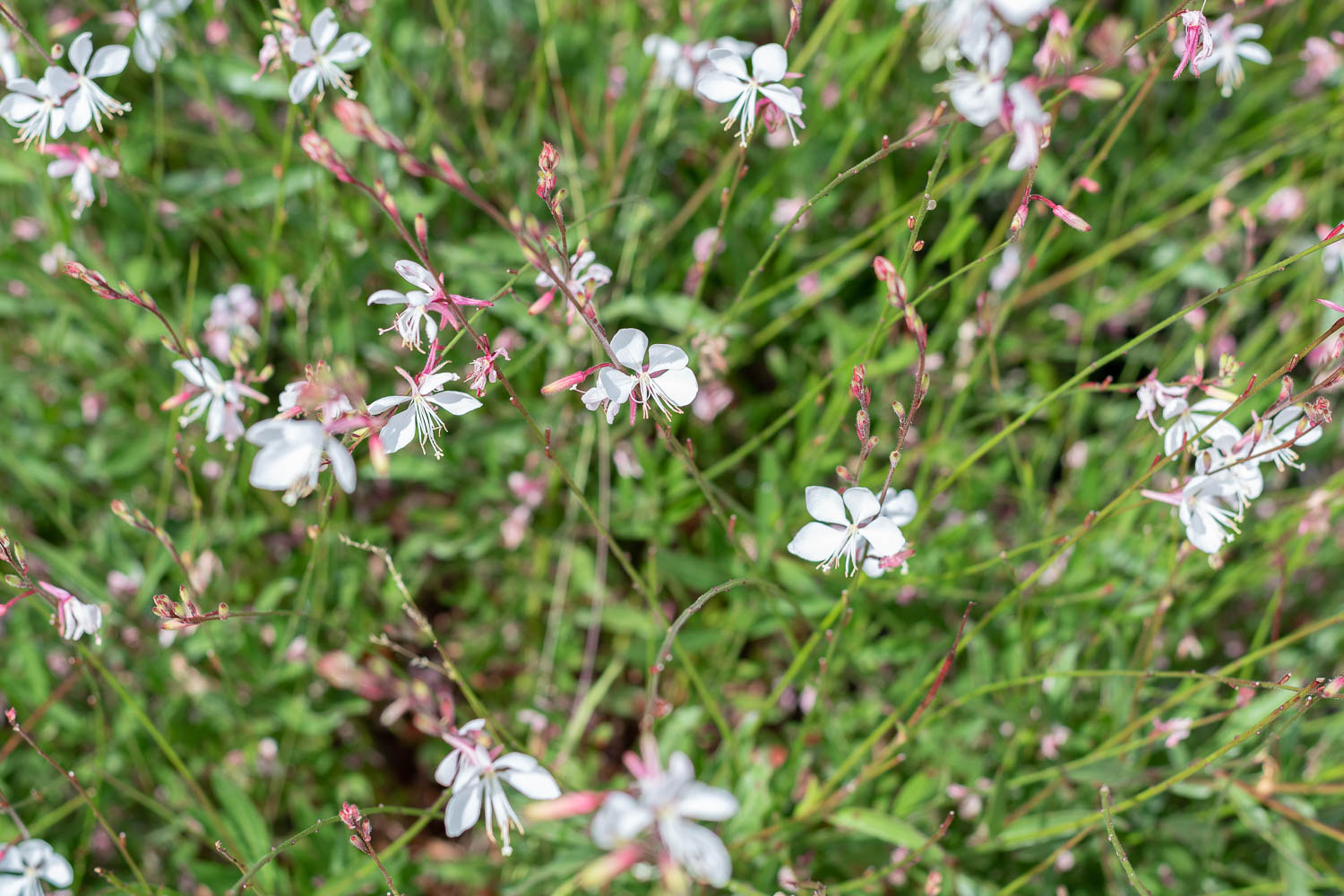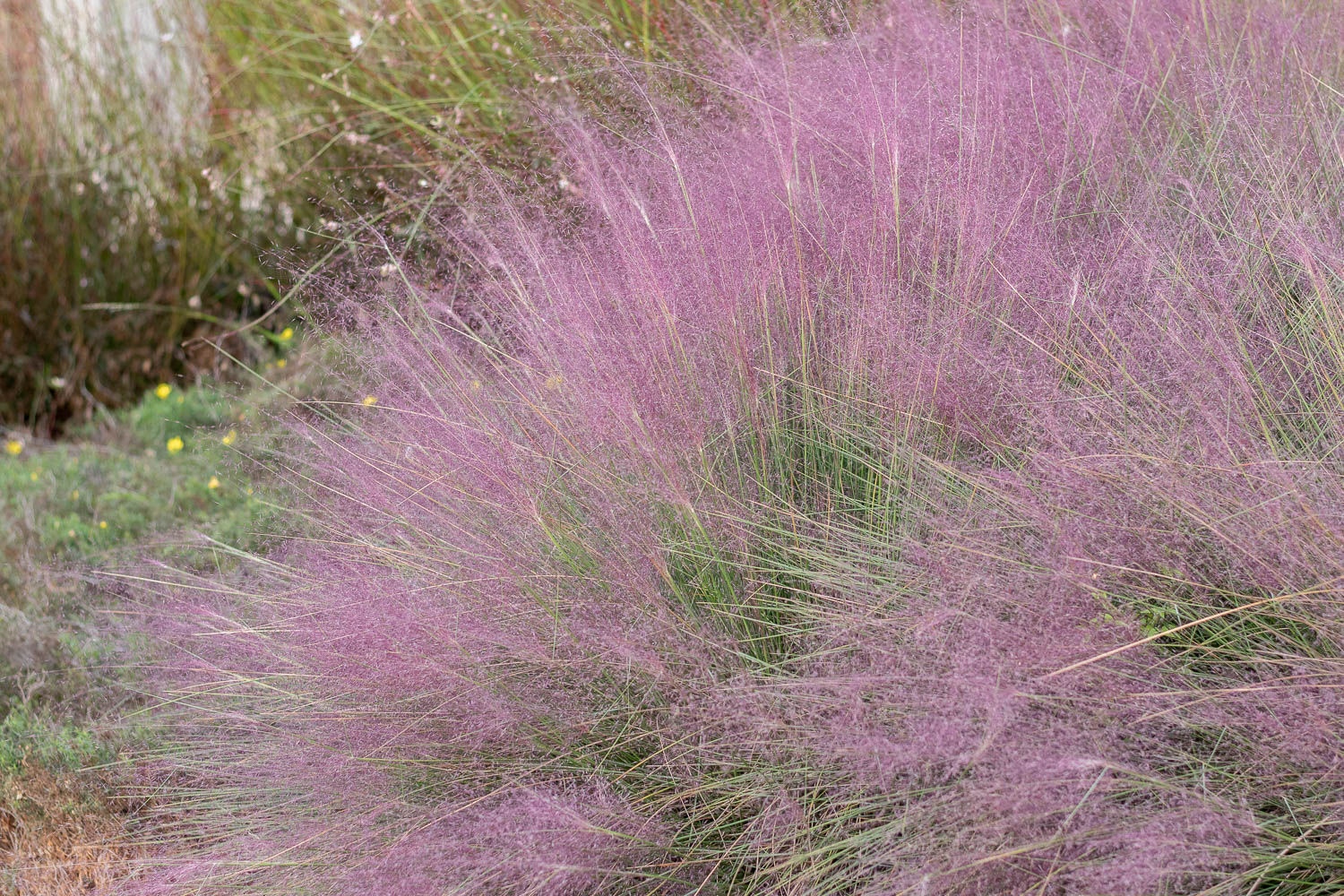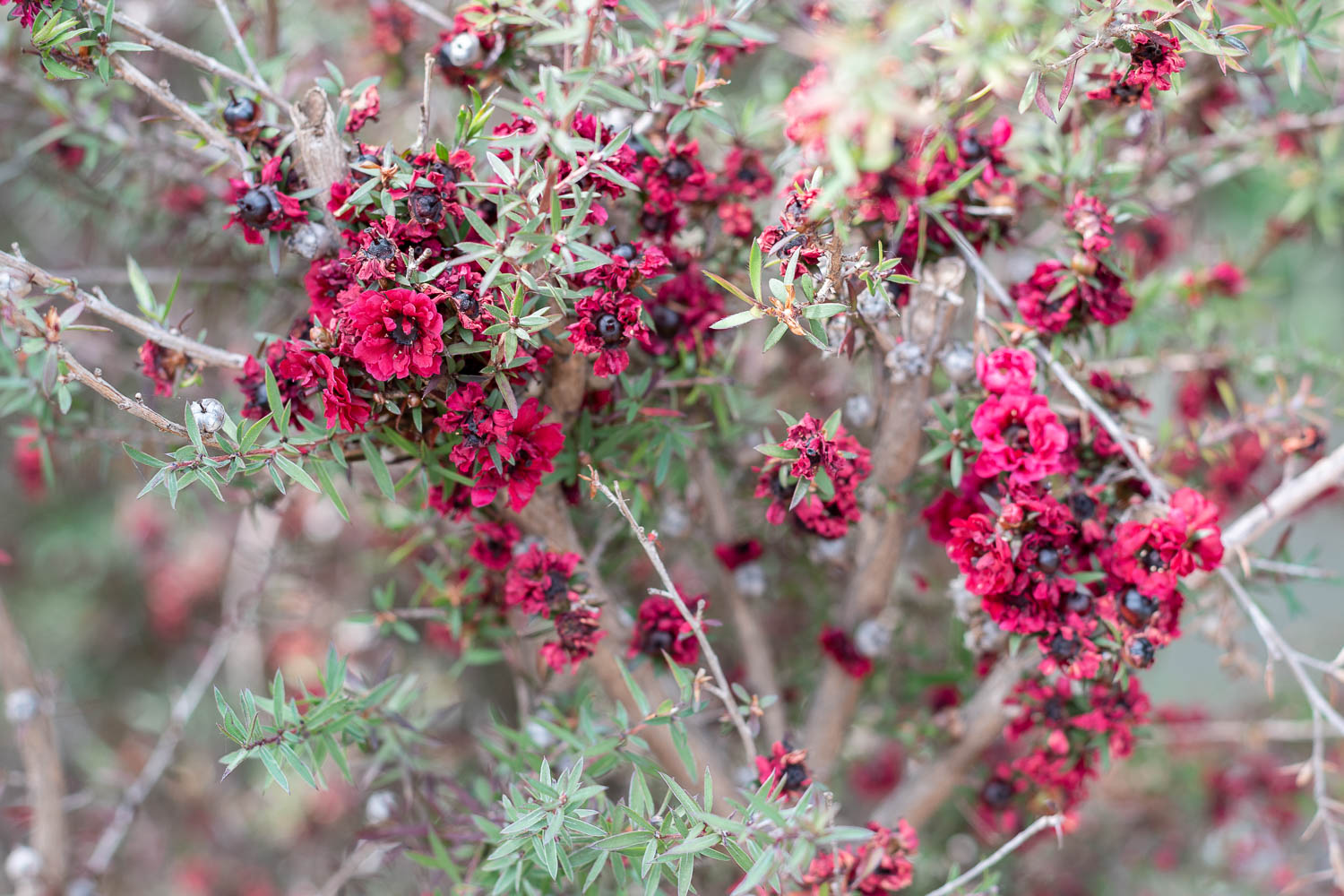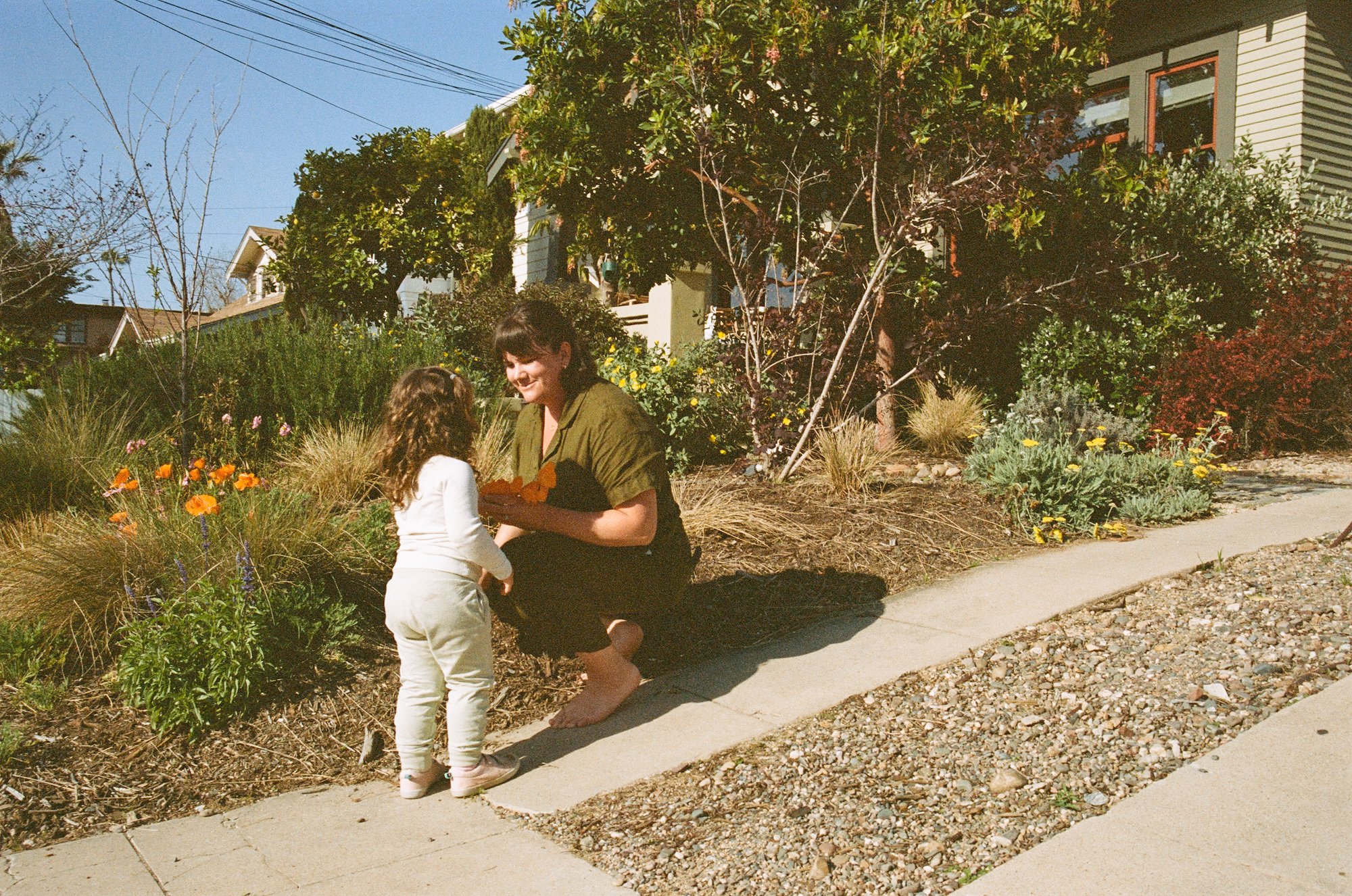The Plant Guide for our Southern California Low Water Front Yard Garden
/The post so so SO many of you have been asking for! A full plant guide of the each of the flora in my front yard. The collection includes a mix of California natives, a few Australian natives that thrive in our similar climate, but all with an emphasis on low water that are beautiful and mostly evergreen. As a refresher, you can review my garden goals and see all of the garden posts here.
Since I’m not going to pretend I’m a plant expert, this post isn’t going to be a description of all of the qualities of each plant. Instead, I’m listing all of the plants with their common name, describing what I like about them, and how they work in my house. Then, I’ve linked a “learn more” button to do some more research on each of them if you want to well, learn more.
This plant layout design was an earlier version of the plans, so the plantings did change a little. However, you can match up the map above to the plants below to visualize where they’re at in the garden. You’ll notice there are a LOT of plants on that plan - and there really are in real life, too! Looking back, I could have scaled WAY back on the plantings. I wanted the garden to be super lush, but I had no idea it would be so full only a couple of years after planting. Though, who can really complain about an abundance of flowers and leafy greens?
Well, without further ado…
My Southern California Garden Plant Guide
Island Bush Poppy
This was one of my must have shrubs! It blooms all year long (seriously) and is has the prettiest pale blue-green leaves with a pop of bright yellow flowers. I like cutting these and bringing them inside for small arrangements.
Arabian Lilac
This large shrub sits in front of the porch and is one of my favorites. The leaves are purple on the bottom and green on top - such a unique combo. The hues stay this way all year long, and in the springtime tiny lilac colored blooms emerge. These leaves make for great arrangements because of their color and long branches. I like to put a buuunch of them in a big vase.
Gaura
This dainty little spring/summer flower is absolutely adored by the bees. The body of the plant sits low to the ground, but tall thin stalks shoot up and groups of white flowers bloom. They are super wispy and pretty in the wind. I have to cut them back at the end of the season then I just wait for the new blooms the next year. We planted ours by the sidewalk so they wouldn’t get blocked by the bigger plants - yet they still grow tall enough that I can see them over the other shrubs.
Grevillea
How cool are these flowers? They’re like flowers of the future. They come in a variety of colors and even different shapes, too. They bloom most all of the year and have cool fern-like leaves. I have two of these on either side of the garden and the both are doing really well - one has taken off! While I love the look of them, I’m mildly allergic to them - my skin gets itchy and tiny red bumps when I touch it. But that doesn’t stop me from enjoying them.
Pink Muhly Grass
I’ve said other plants are my favorite, but I really mean it when I say this is a favorite. This otherwise average looking grass blooms into an absolute spectacle of pink fuzziness in the fall. When much of the yard has turned brown from the summer heat and is going dormant for the winter, these grasses steal the show with their pink hues. I look forward to their bloom at the end of every summer and miss them when they disapear.
Purple Smoke Tree
This little tree has taken its time growing into its true self. It’s still in a funny adolescent stage with leggy stalks and no showy flowers. I fell in love with it for the fluffy, smokey, flowers (click the button to see) but this tree hasn’t quite matured into a flower-developing fella. However, those pretty variegated leaves and burgundy color are still gorgeous and it adds nice height by the flagstone pathway. These trees also come in different hues including a pale green leaf with cotton candy flowers.
California Poppy
This photo I managed to get doesn’t do justice to these flowers because they are so pretty in big groups (you’ve seen the Superbloom, right?). These are all planted by seed and pop up in the springtime. We sprinkled them in the fall of 2016 and they bloomed like crazy for the next two years. But we didn’t have as many blooms in 2019, so it’s time to sprinkle more seeds for next year.
Australian Willow
This tree lives in the parkway between the street and the sidewalk. It doesn’t bloom flowers so I don’t call a ton of attention to it, but it’s a lovely tree! Much like other willows, it’s wispy and is super pretty in the wind. It’s a BIG improvement from the ugly palm that was there before. (I hate palm trees - sry) My grandmother’s name was Willowdean so this tree feels like a nod to my mom’s mom.
Sundrops
These little cuties are a nice little ground cover. They start out in early spring as red buds, then open into a blanket of bright yellow flowers. When first planted, the plant looked like a dead weed, but they’ve grown nicely and take up a lovely cover of the front yard. In the summertime they die back until spring.
Pineapple Guava
Look at that flower! Those petals are edible and taste kinda like marshmallows. When the flower dies back, it makes a small green-grey fruit that when sliced open it looks like a tiny yellow watermelon. It tastes like a mix of banana, pineapple, guava, and sweet tarts. When not eating the plant, I enjoy the pale grey-green leaves. I’m a sucker for foliage that looks different from traditional greens.
Cousin Itt
Half of what I love about this plant is its name. (Click “learn more” to see a wider shot of it to see how the name is so fitting.) The other half I love because it has the feel of a woodsy pine tree - a look I love but don’t get to enjoy in my hot sunny climate. While this plant is listed as being happy in my climate, very few of these plants have survived in my yard. Bummer.
Lavender
I wanted to include foliage that could be edible, and lavender is just that. I make a mean lavender and apricot tart! Plus, it smells wonderful on my walk from the front door to the car. When not in bloom, the plant is a lovely little round ball of dusty blue leaves.
Strawberry Tree
This is the tree we planted in front of the office to provide shade in the room that gets lots of western sunshine. I’m amazed by how fast it has grown in just a few years - we’re definitely enjoying the shade it provides. This tree has bright green leaves and a really pretty red trunk with a neat curly bark texture. It produces adorable teeny tiny bell-shaped flowers. It also makes round fruits that almost look like they’re dipped in sugar (seen in photo towards the left). I just tasted one the other day and it was yummy but had a tart kick to it. The birds really like hanging out in the branches.
Ruby Glow Tea Tree
I normally gravitate to foliage that feels like I’m wandering the leafy woods in the Pacific Northwest, so I wanted to diversify textures with this tea tree. It has super pointy leaves and deep ruby colored tiny flowers. When it first blooms, the whole shrub is all bright red, but by the end of summer it’s more of a brown-burgundy. I dig it.
Yarrow
Yarrow comes in a billion colors and we have it in the white/yellow/red/pink hues. The flowers bloom as cool flat-topped mini flower clusters and the leaves are all different hues depending on the flower color. We planted them in the driveway to be a colorful ground cover, so it came as a surprise when they grew to be about 2 feet tall! To keep them from getting too crazy, I cut back the flowers to the ground each fall when the color fades from the blooms. I’ve heard of the flowers being used as dyes and even being brewed as a tea - this is on my to-do list.
Rosemary
In my quest to have plants that I could use in cooking, I planted several rosemary plants. But I can’t keep up with them - I need more recipes for the bounty of rosemary that keeps growing and growing! I like to cut it and gift it to neighbors to share the wealth. Even if I’m not cooking with it, the plants produce a lovely aroma on my walk from the driveway to the house. In the springtime, it produces pretty blue flowers.
Western Redbud
Ok, I mean it when I say that this is my favorite tree. It seriously amazes me. It loses all of its leaves in the winter, then come early spring lovely clusters of pink flowers bloom all along the branches (click the button below to see!), then the flowers fall off and tiny purple-red heart-shaped leaves start to fill in. As the season turns to summer, the leaves turn green, and then orange, and then yellow by fall when they drop to the ground. San Diego doesn’t get much in the way of leaves changing, so it’s a treat to have this one do just that - and it’s native. But the kicker is those pink flowers - it’s so cool to see the branches covered in florals without any leaves.
Brown Turkey Fig Tree
We planted this fella for the fruit - I simply adore figs. But it turns out the leaves are also amazing. I make ice cream using the leaves, so it turns out the whole tree is edible! The only issue we have is Sheryl, our backyard opossum, tends to eat the figs before we can.
Kangaroo Paw
These plants are a tropical-looking base of long pointed leaves which isn’t really my cup of tea - sometimes I feel like they look out of place in my yard. But, they’re really cool in the summertime it grows super tall stalks of flowers that look kinda like, well, kangaroo paws. Ours are a fire-engine red hue, but they come in all the colors. Ours grow so tall (about 4-5’) that we need to put in stakes to hold them up - otherwise the flowers get too heavy and they fall over blocking our walkway.
Island Morning Glory
Morning glories are a popularly hated vine in San Diego because they are considered invasive and can take over everything. However, this variety is native to California, so I take no issue with it. I use them to decorate a fence and I shared my DIY on how to train them - click here for that post.
Marie's Fescue
These tall grasses provide a meadow-like vibe. They’ve grown really large and blow in the wind when they aren’t being sat on by neighborhood cats - apparently they make nice feline cushions, too! The grasses can start to look brown towards the end of the season so we trim them back and try to avoid cutting the green parts of the grass. Since I don’t want to just cut it off and have it look like a bad haircut, I weasel in and trim the brown grasses by the base. It’s a bit of a process but a good podcast helps with the tedious task.
Lemon Tree
This tree was here before we bought the house and this citrus lover wouldn’t dare get rid of a mature lemon tree. It yields so many fruit that I spend an entire day picking, sorting, cutting, juicing, straining, and freezing them. I’m not complaining though because I have lemon juice for years stored away in my freezer.
All of the photos below are from my exact flowers from my yard so you can see exactly how they are doing in my climate. But note that I’ve compiled photos I took throughout the seasons of the plants during their prime, so I recommend researching each plant to see how it looks throughout the year. Click the “learn more” buttons for everything you need to know. Also, be sure to check out my garden resources where I compiled all of the books, classes, and gardens that taught me everything I know.
I also want to mention that while I’m publishing this in the spring/summer. We planted all of these plants in the fall when we knew the air and soil wouldn’t be so hot. It took some patience to wait, but if you’re planning your SoCal garden, hold off until it cools off!

